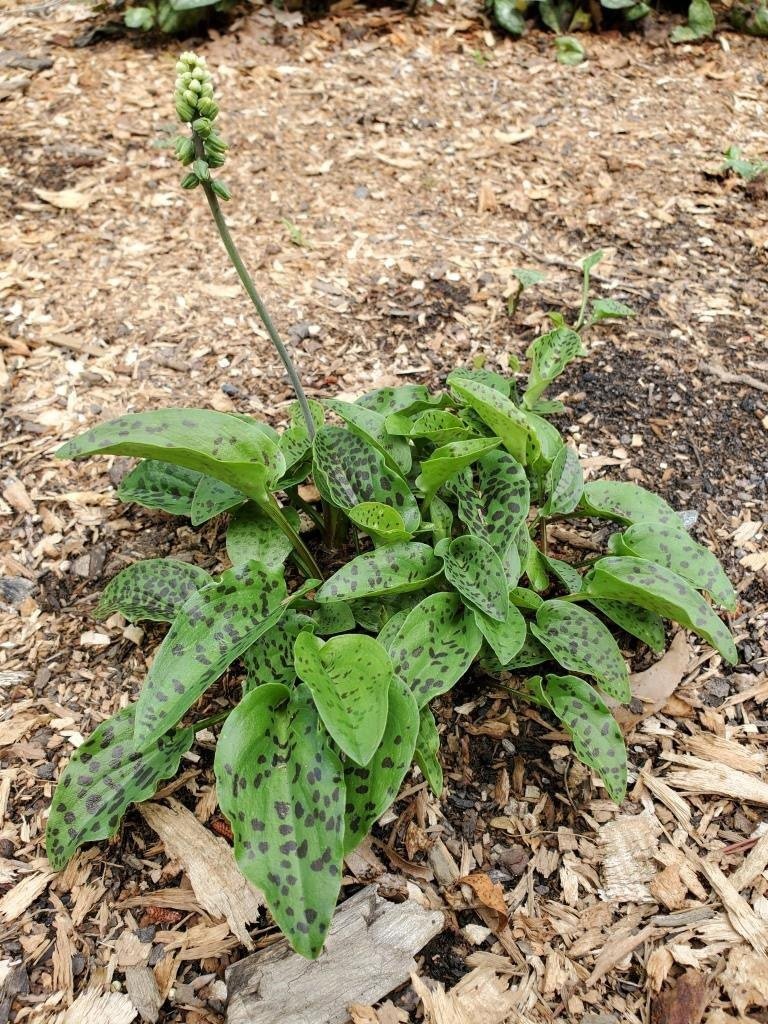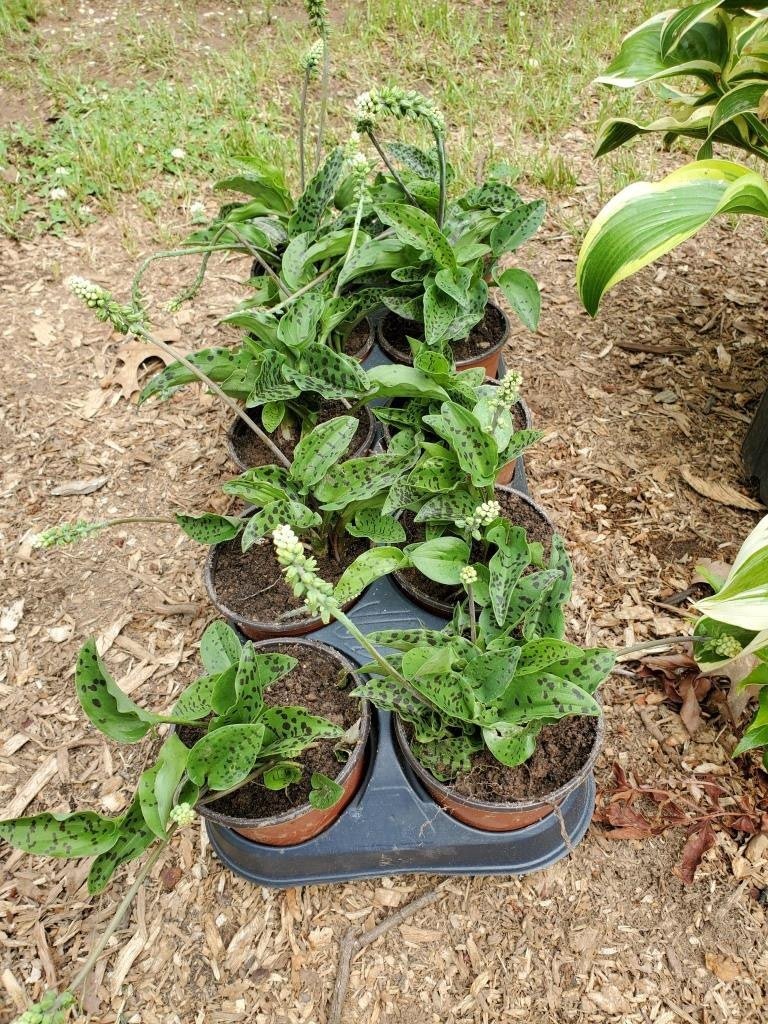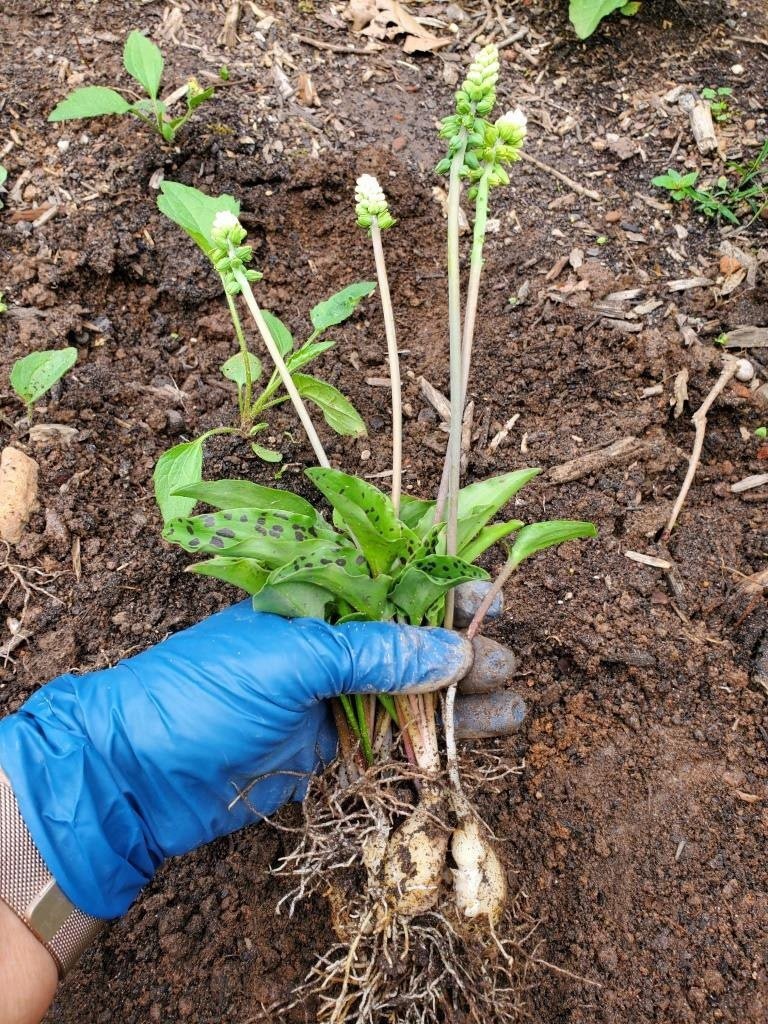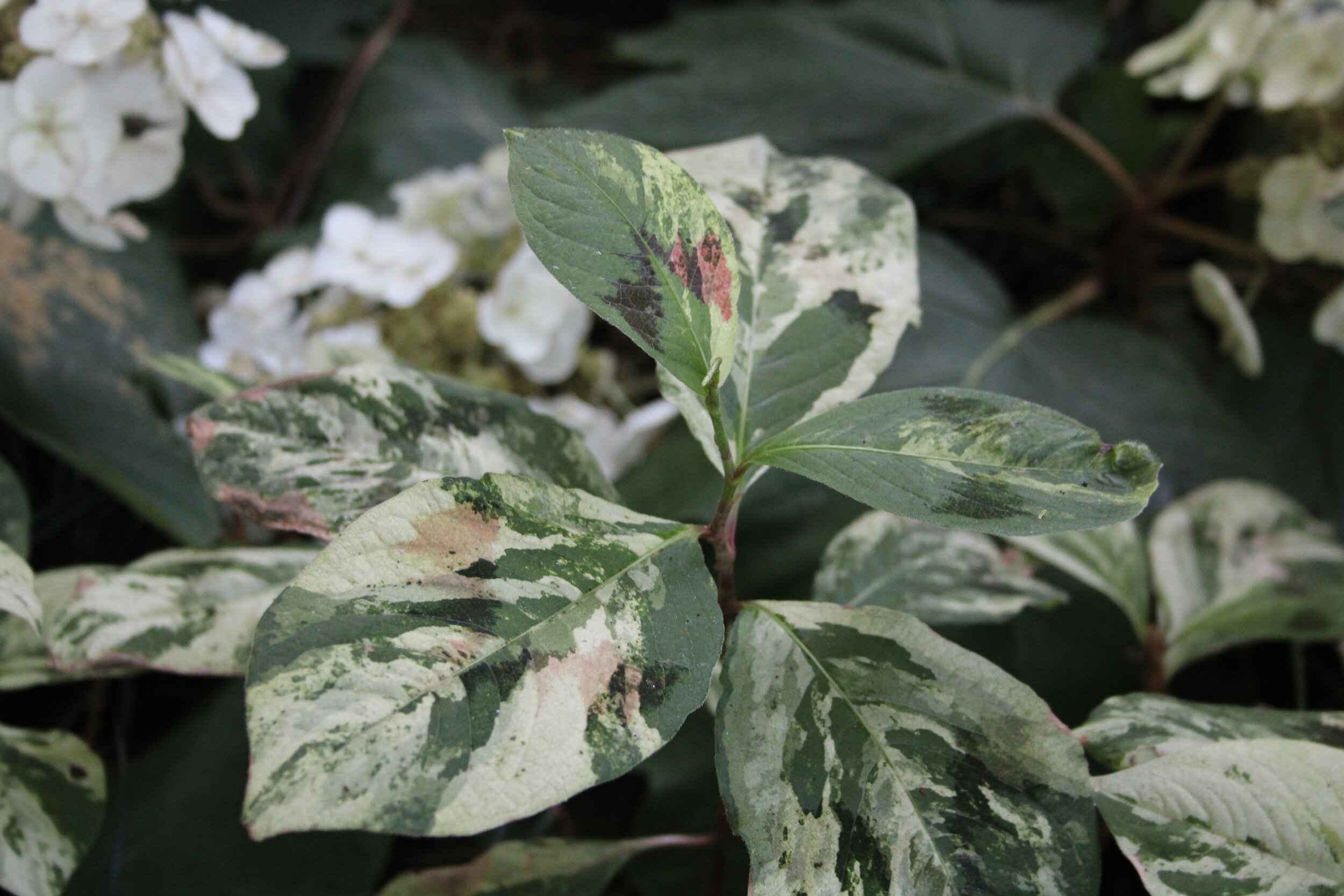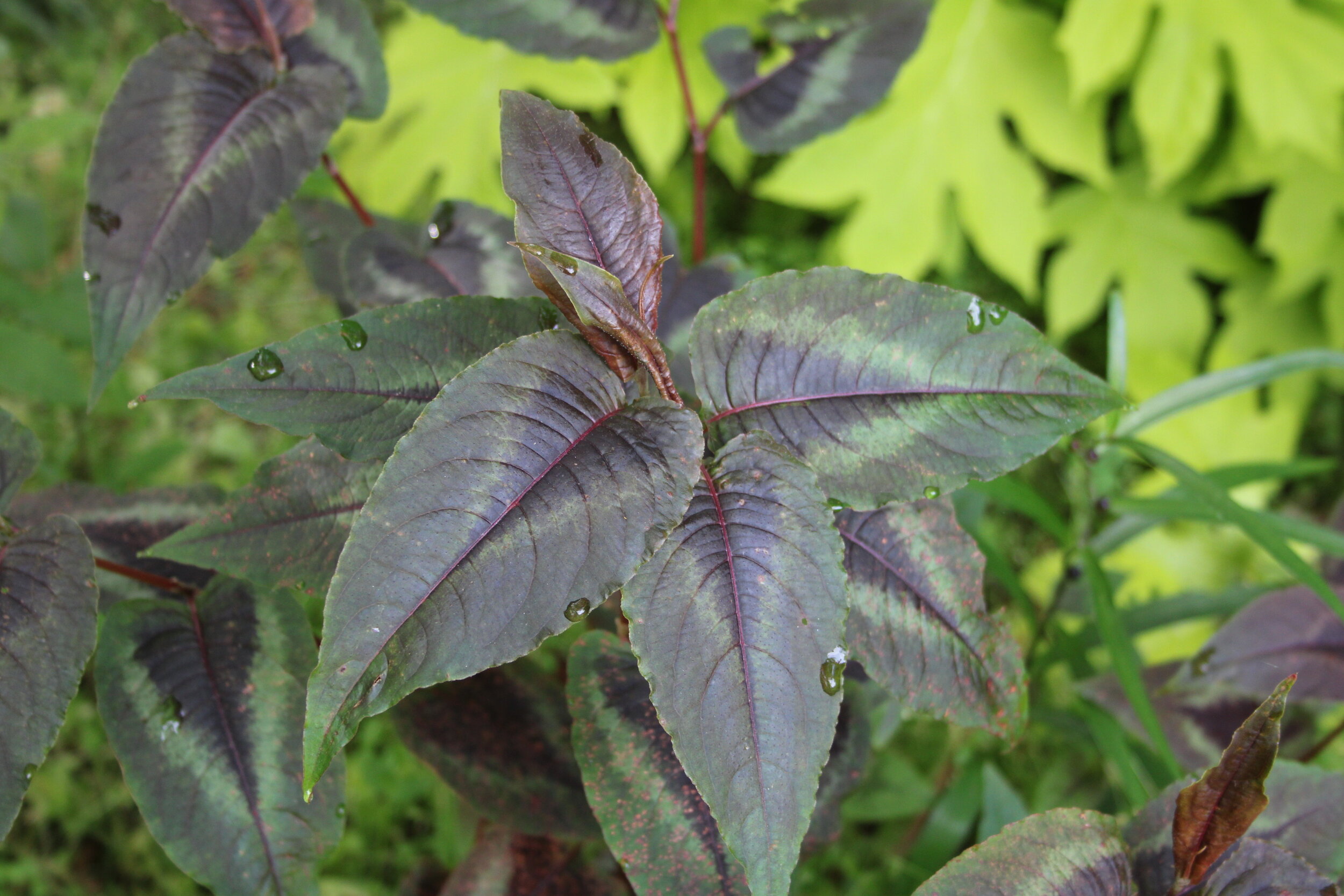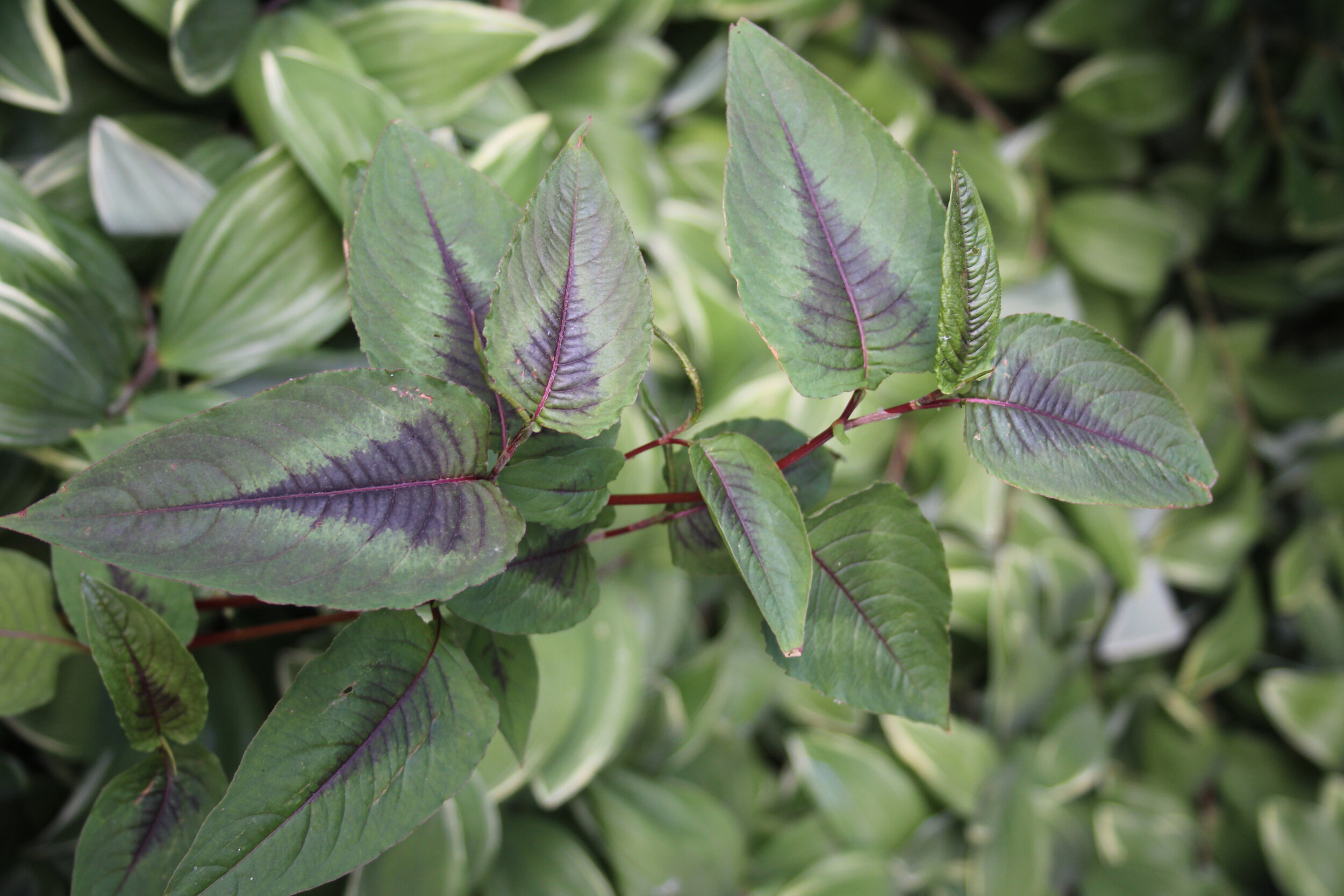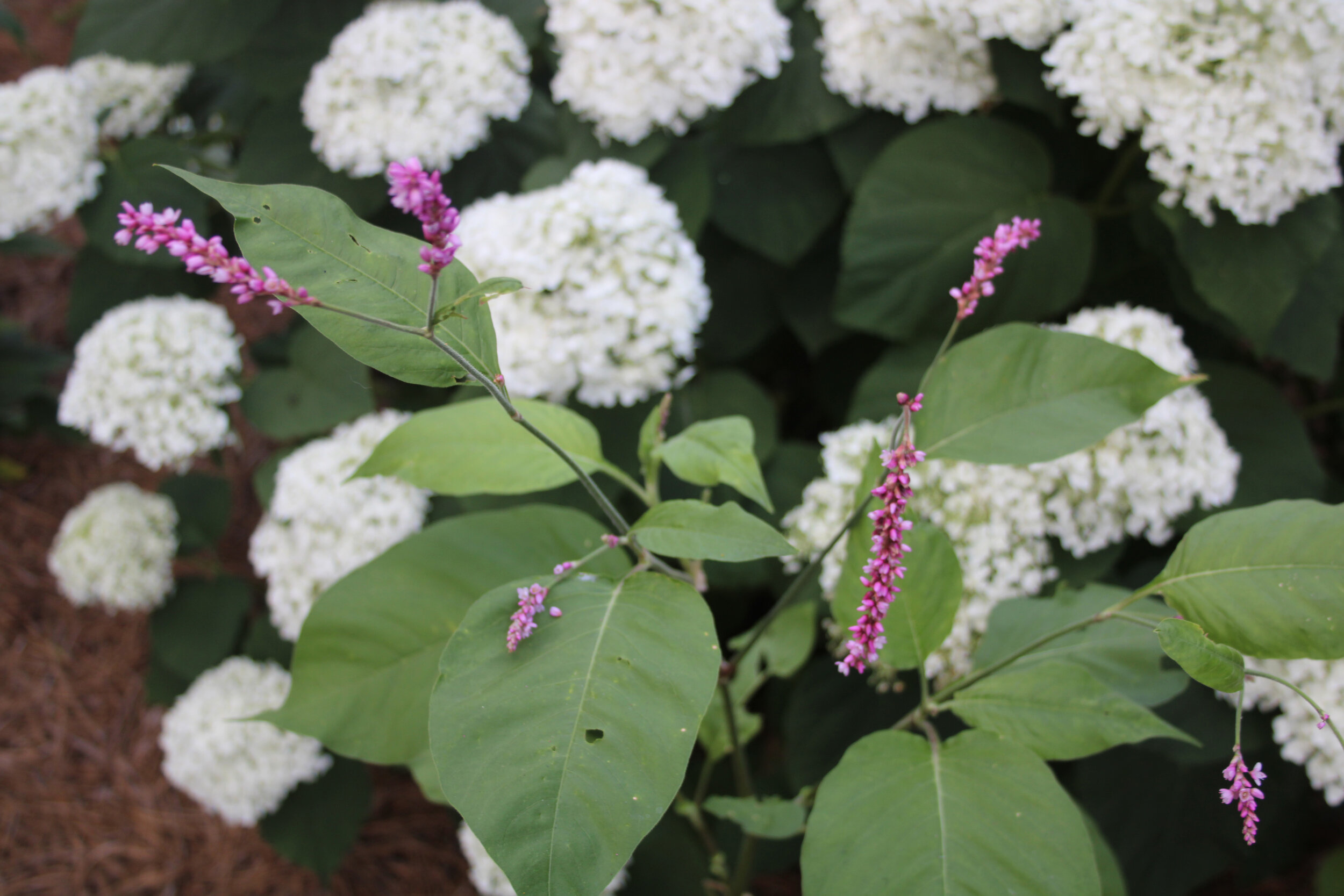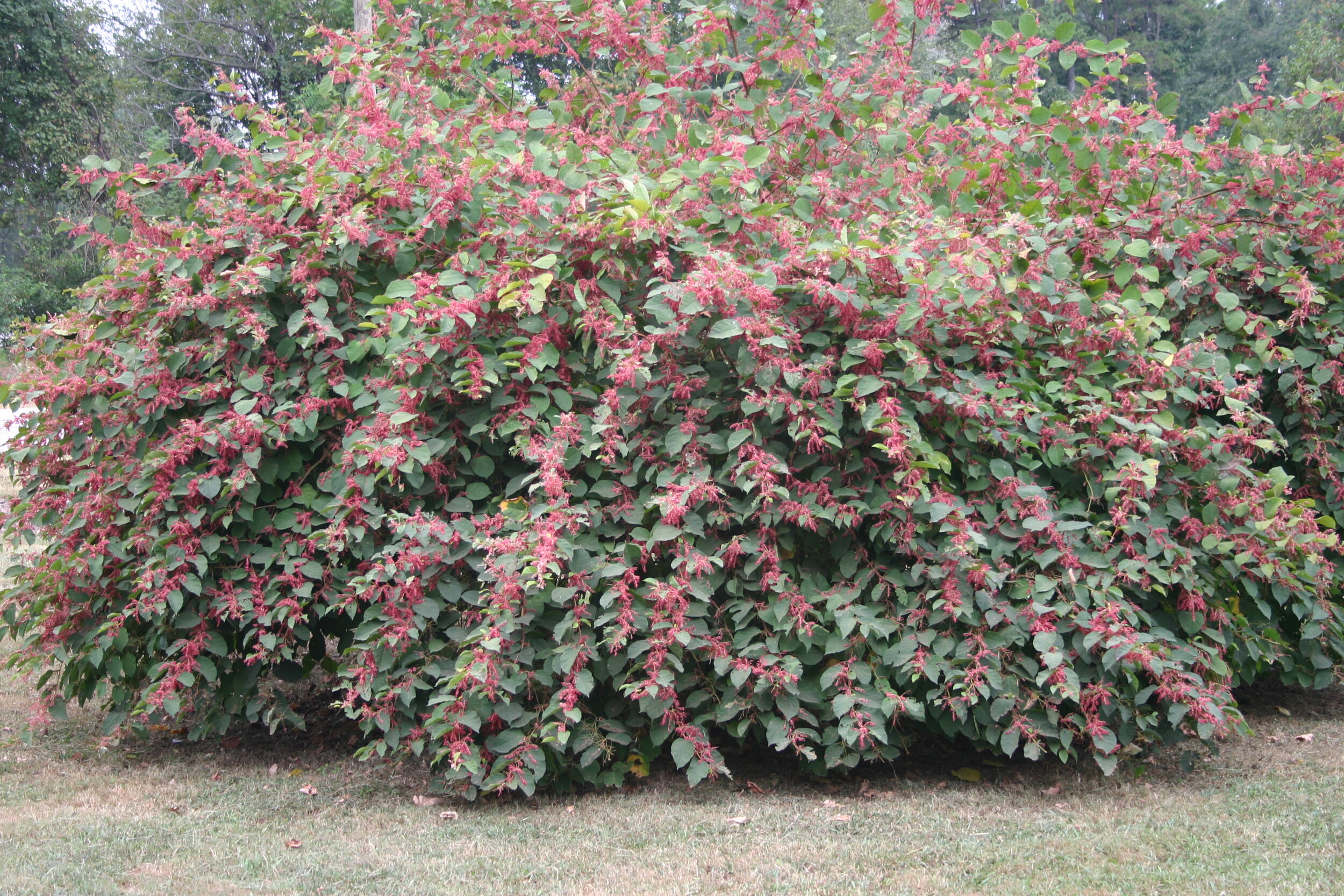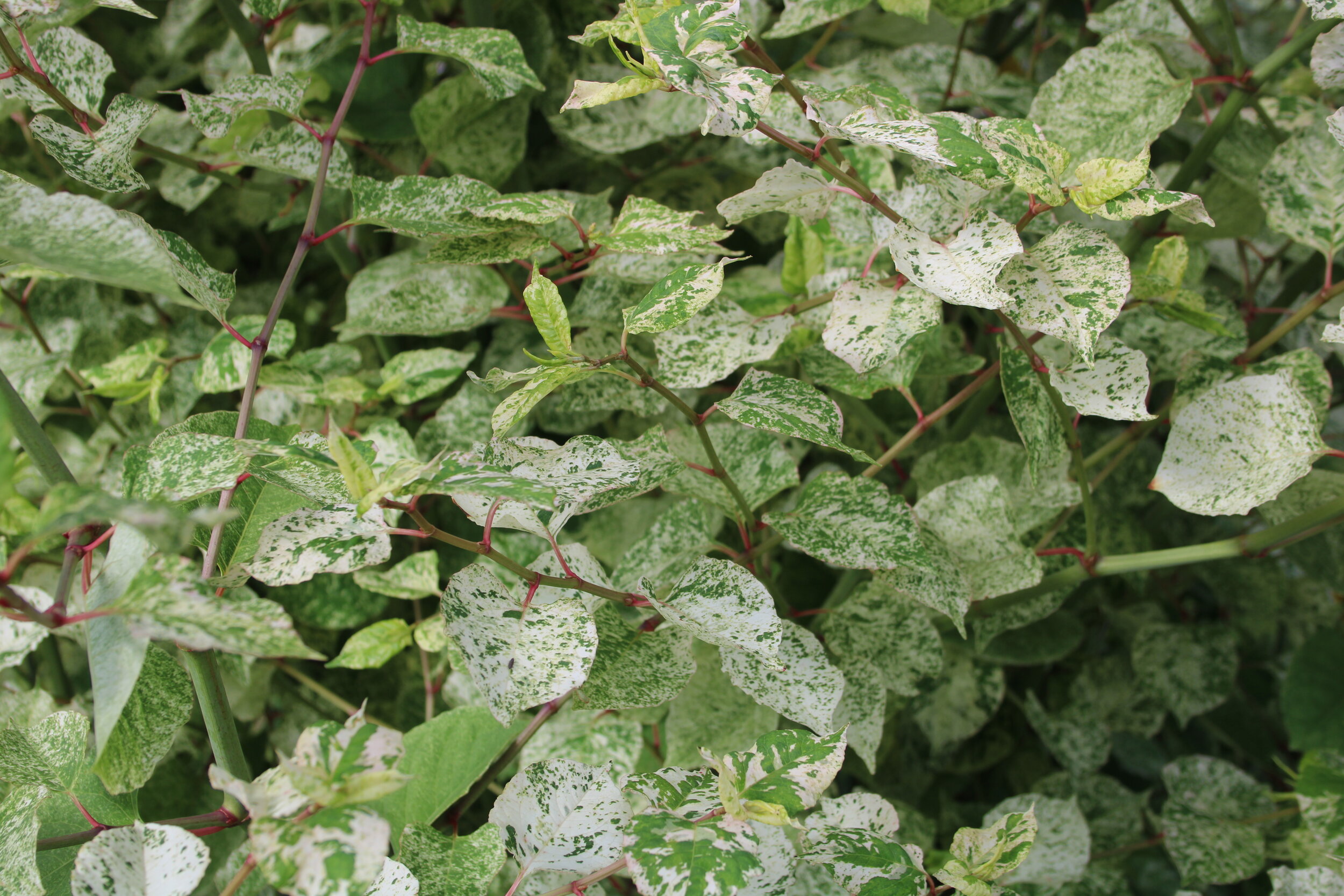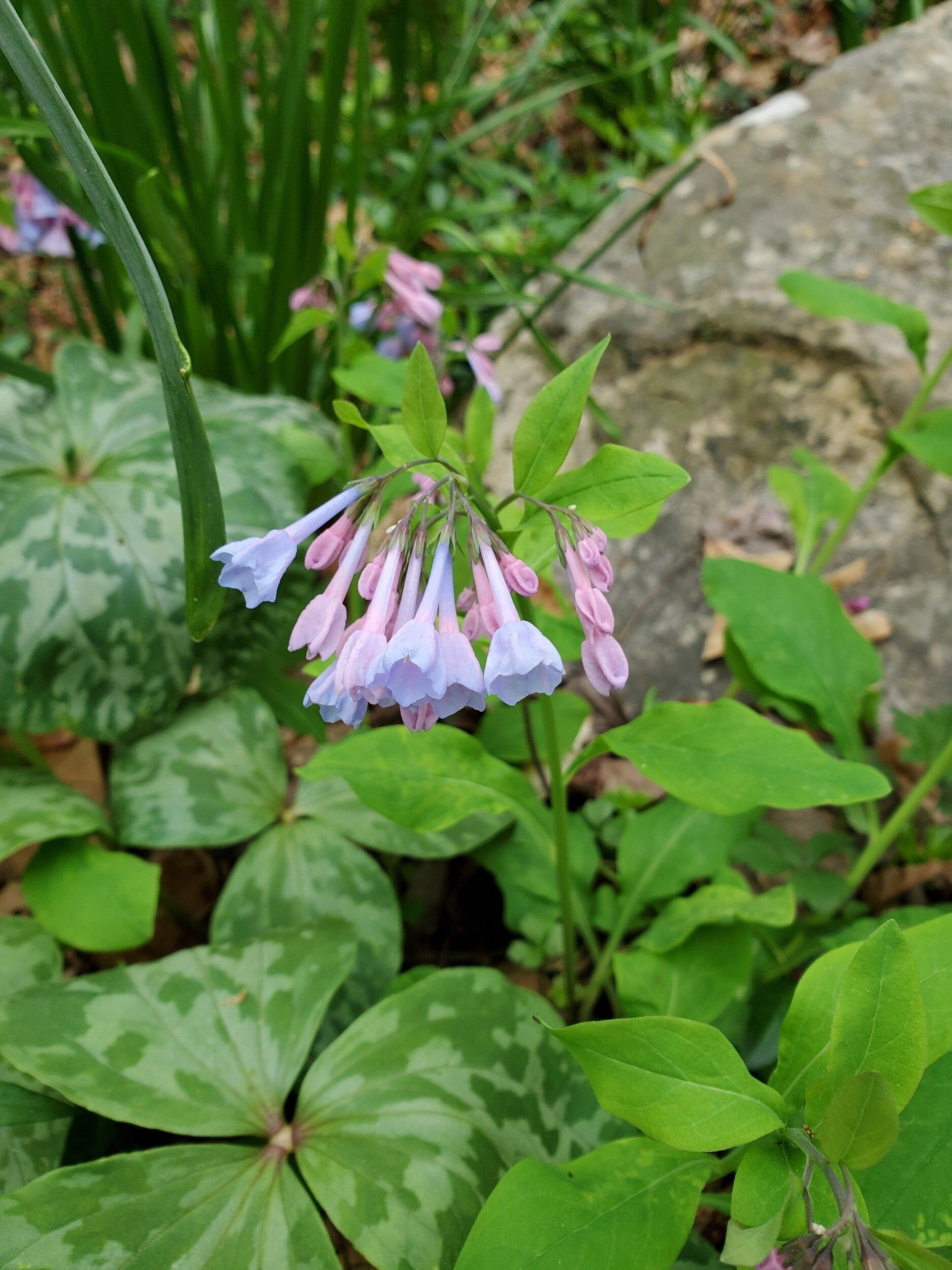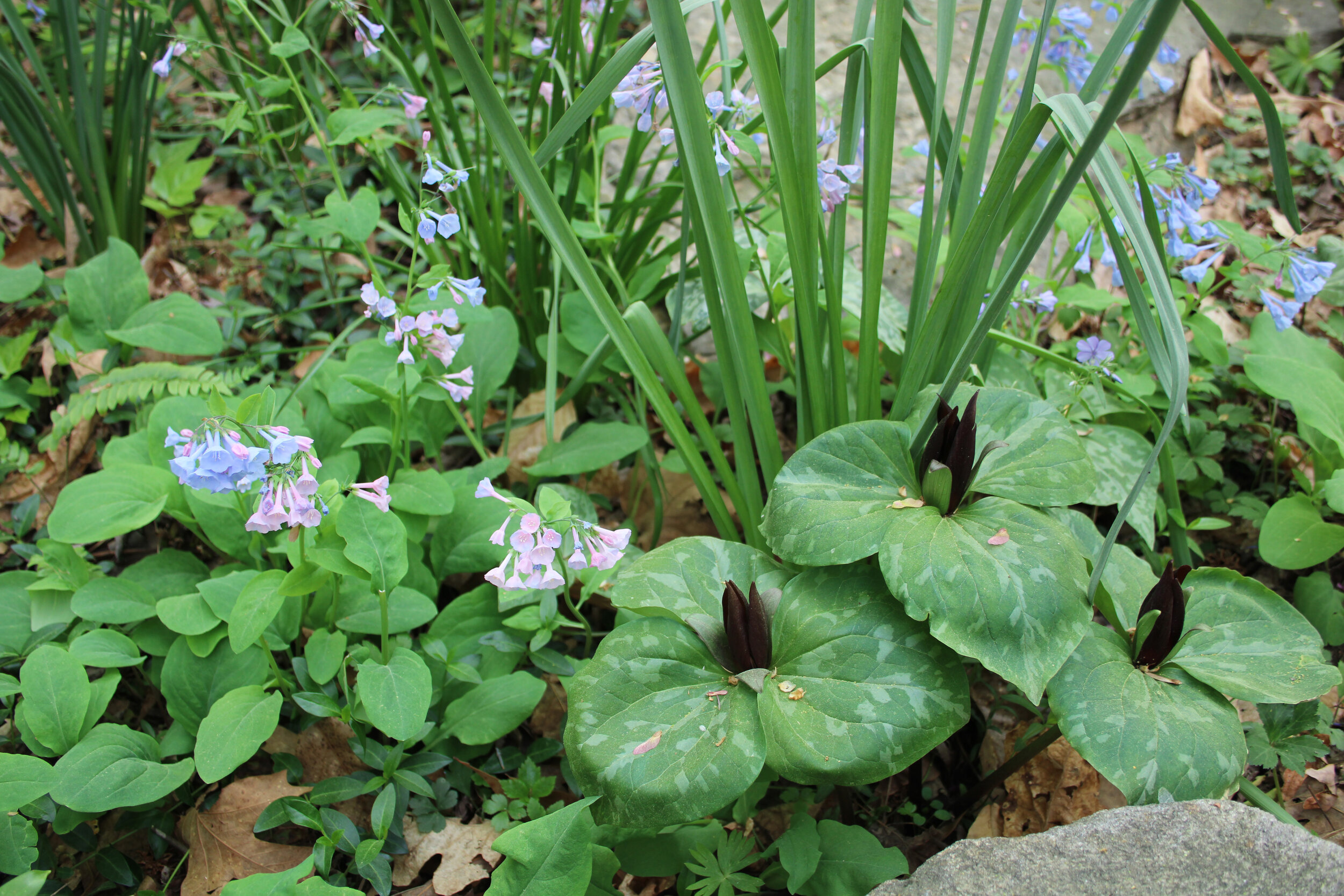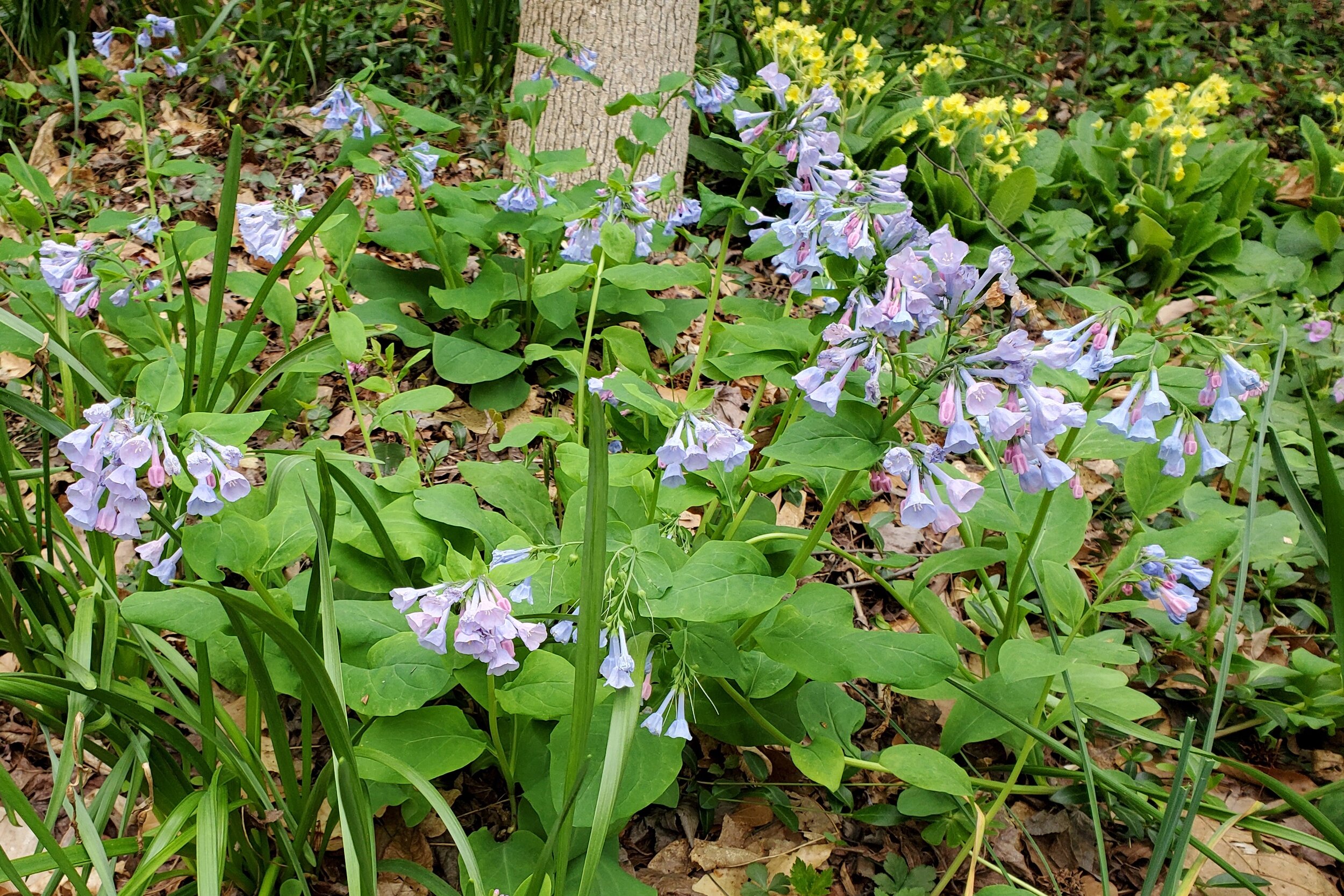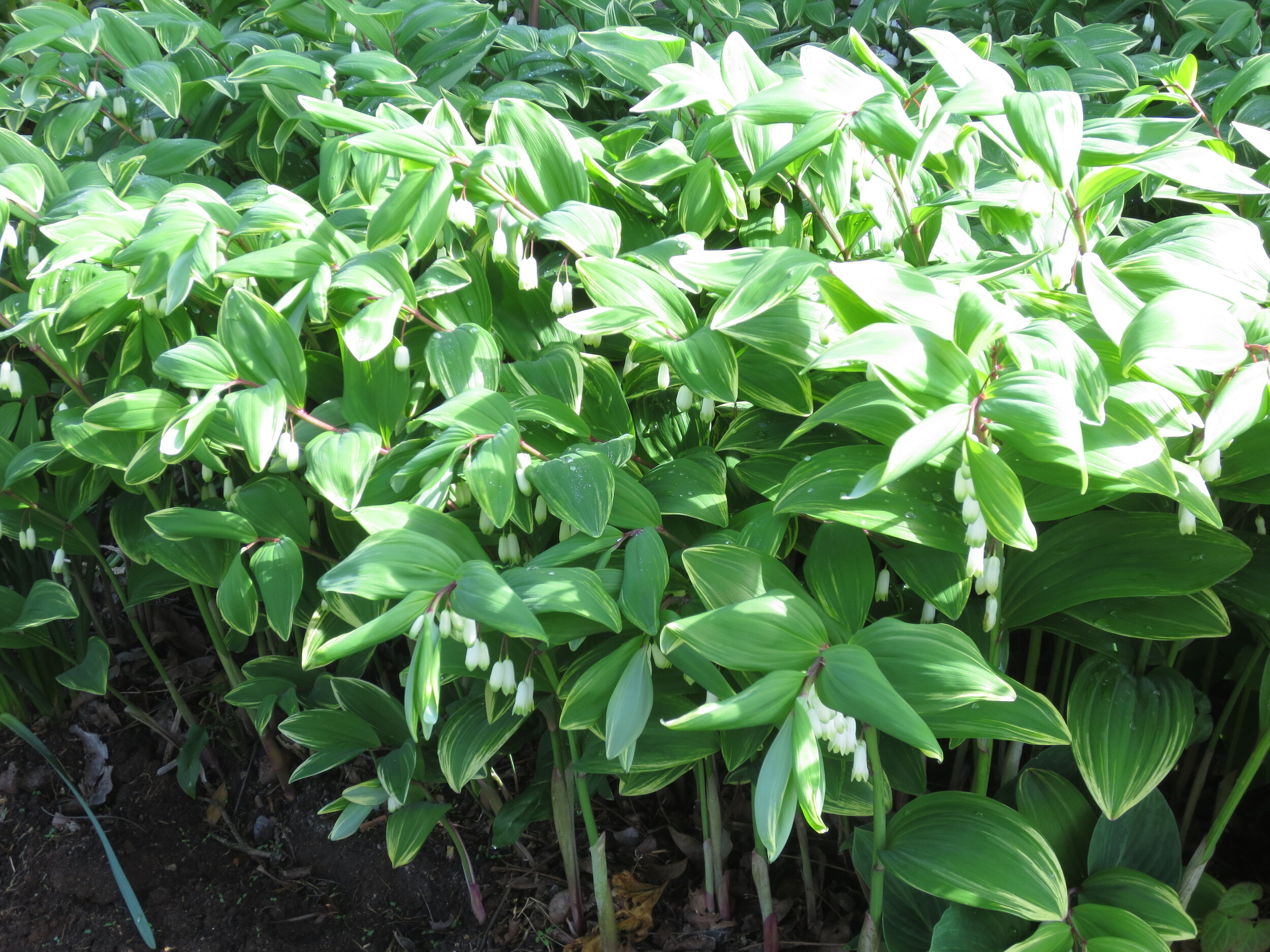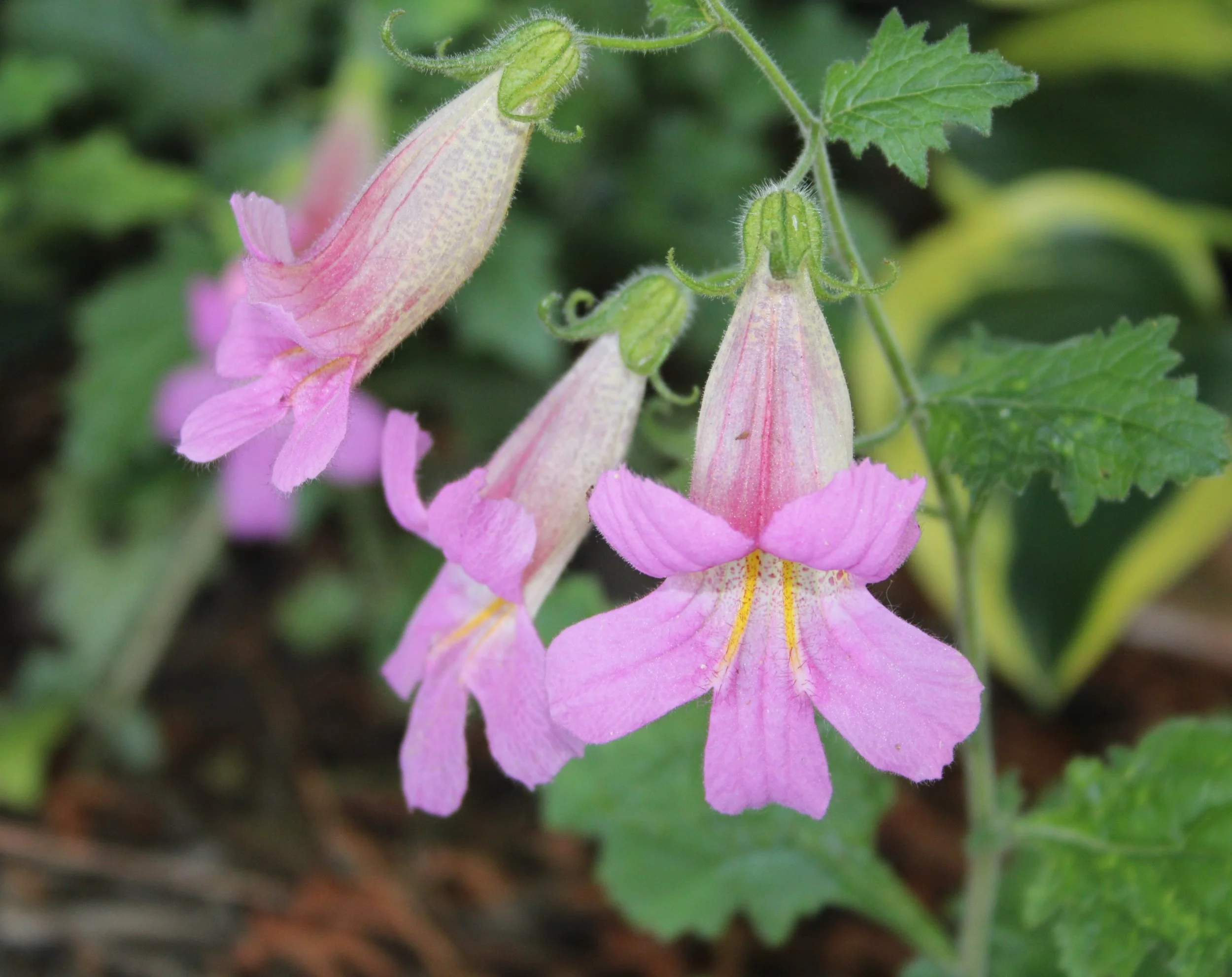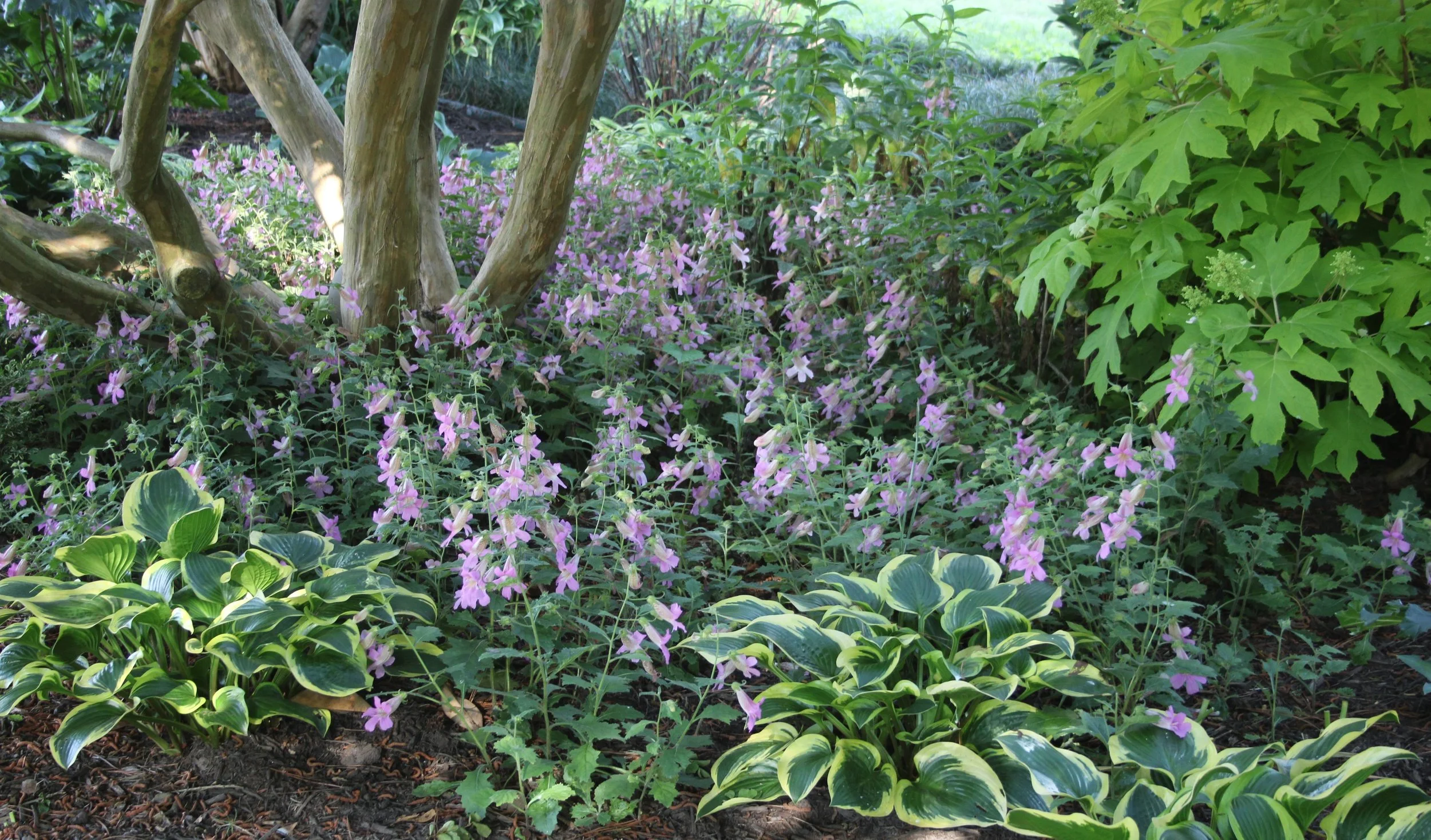Drimiopsis maculata is a diminutive groundcover, reaching only 6 to 8 inches. Common names include Little White Soldiers, African False Hosta, and Spotted Leopard Lily or simply, Leopard Lily. The “white soldiers” name refers to the spring and summer flowers, which are small, tightly packed clusters that look like a white Grape Hyacinth. The “lily” reference is to the bulb, which is fleshy like a Daffodil rather than overlapping scales like a Lily or Garlic.
Leopard Lily is listed as cold-hardy in zones 8-10, but has grown well for me in Zone 7b for many years. It has the same cultural needs as most Hosta – moist soil with acidic to neutral pH, part to full shade. Leaves emerge directly from the bulb, without stems. Its purple freckles are darker in more shade. The spots may fade away later in the summer. Given a little fertilizer and irrigation during dry periods, Leopard Lily will spread reliably if not rapidly. It will withstand some drought; wilted leaves are a plea for moisture. They are quite tolerant of heat and humidity.
‘Blue Mouse Ears’ or other miniature Hosta make a beautiful edging for a shady bed, but frequently slugs damage those in the Mary Snoddy garden. Leopard Lilies make an attractive edging also, and are rarely bothered by slugs. Voles have never damaged mine, but that may be a case of luck rather than their distaste for the bulbs. Plants also do well in containers but pot-grown specimens are more prone to cold damage.
Like Hosta, Leopard Lily goes completely dormant in winter. Plants are propagated by dividing clumps of bulbs. This can be done at any time of the year but spring is preferred.
A note on the taxonomy of Drimiopsis maculata: There is disagreement between sources as to whether it belongs in the Hyacinth, Lily or Asparagus family (Hyacinthaceae, Liliaceae, or Aparagaceae). The word maculata means “spotted,” and everyone agrees on that.

